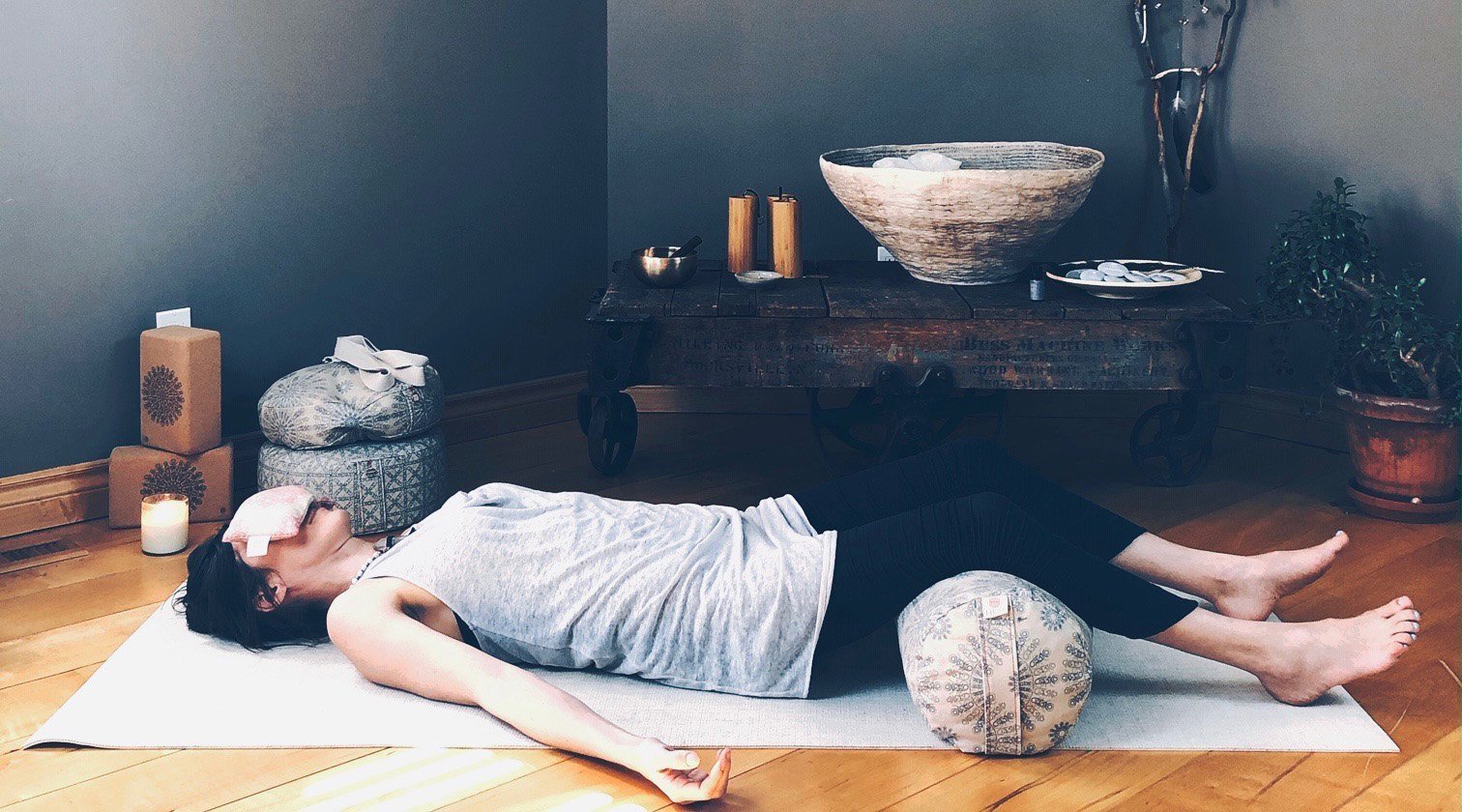Your Cart is Empty
FREE SHIPPING within CANADA FOR ALL ORDERS OVER $175. We are sorry to say we are no longer shipping to the U.S.

Some days the only yoga you need is savasana.
One of the most important yoga poses of all is usually referred to by it's Sanskrit name, "savasana" (pronounced sha-VA-sa-na). Even if you have been to just one yoga class, you will likely have experienced the beautiful benefits of savasana.
We are living in strange times right now, when stress, fear, worry, anxiety might be with us everyday. It’s a challenge to stay calm and positive in the face of the current situation, to find our way to a more peaceful and joyful state of mind. Yoga is one of the tools we can use to do it. And savasana might just be the best antidote for all these troubling emotions.
Just this one single pose can help you to feel refreshed and rejuvenated, peaceful and relaxed. Savasana can soothe your nerves and calm your mind, and create a renewed sense of balance and clarity.
Some days the only yoga you need is savasana.
What the heck is savasana?
Savasana is a meditative yoga pose, with the whole body relaxed into stillness on the floor as you focus on the movement of your natural breath, the flow of oxygen in and out of your body. This pose allows you to fully release and let go while remaining alert and open.
The Sanskrit word “savasana” actually translates to “corpse pose”, certainly an odd name for a yoga pose. It’s called “corpse pose” for the absolute stillness and self-surrender that is the essence of the pose. And also for the symbolic significance of this pose for the ancient yogis who believed (as so many still believe today) in the rebirth and renewal of our authentic self after life leaves our physical bodies. “Corpse pose” is like a rehearsal for this renewal.
Personally, I prefer to call it by the Sanskrit name “savasana”. And many teachers call it “resting pose” or “relaxation pose”.
Savasana is about stillness…
Stillness of body and mind is the essence of the pose. The simple act of stillness can shift your perspective, help you to connect with your inner wisdom and with the infinite wisdom and possibilities of the Universe. And the more you practice it, the more you will know that this blissful stillness and wisdom is always available to you.
…and about letting go
Lying in savasana you let go of the muscular tension built during your practice. You get to let go of the mental tension and stress you might be holding onto, and you can let go (at least temporarily) of things that don’t serve you well such as the fears, worries and concerns. You have this opportunity, these few precious moments, to let it all go and to relax into this ultra peaceful and calming pose.
Just see what happens.
It’s NOT about napping
You might hear some gentle snores during savasana in a yoga class. Thats ok, maybe that person is really tired. But napping is not the purpose of savasana. It’s important to relax and release, and at the same time to stay alert and present. The purpose of savasana is to relax your body and expand your consciousness at the same time.
Sounds simple…and it is simple. And so beneficial. But it’s not always easy.
When to do savasana
Every practice should end with savasana, allowing you to absorb and assimilate all the work done during your practice. It is a vitally important pose. A practice without savasana is like mixing up a batch of cookies using the most delicious, high quality ingredients, but forgetting to bake them. Practicing savasana is like baking in the benefits of your practice.
Savasana can also be used at the very start of your practice as a way to arrive, to settle and ground yourself, a place to set your intention.
Andsometimes, savasana is the only pose you need. It can be a practice in and of itself. So any time you need an antidote to the stress in your life, a way back from worry and anxiety, just practice savasana. It’s so helpful. If I had known this in the midst of my high-pressure career, I would have been closing the door of my office and lying down on the floor for a few moments of savasana every day.
Now, I include savasana in every practice I do at home.
Here’s how to do it.
Remain here for 5-20 minutes, the longer the better.
Releasing the pose
Increase the relaxation with props
Variations on savasana
Variations including having your legs up the wall, your calves on a chair with your knees at a 90 degree angle. If you have trouble breathing you might wish to elevate your chest on a bolster.
For more rejuvenating poses similar to savasana, discover 4 Ultra-Restful Ways to Use Your Yoga Bolster.
Comments will be approved before showing up.